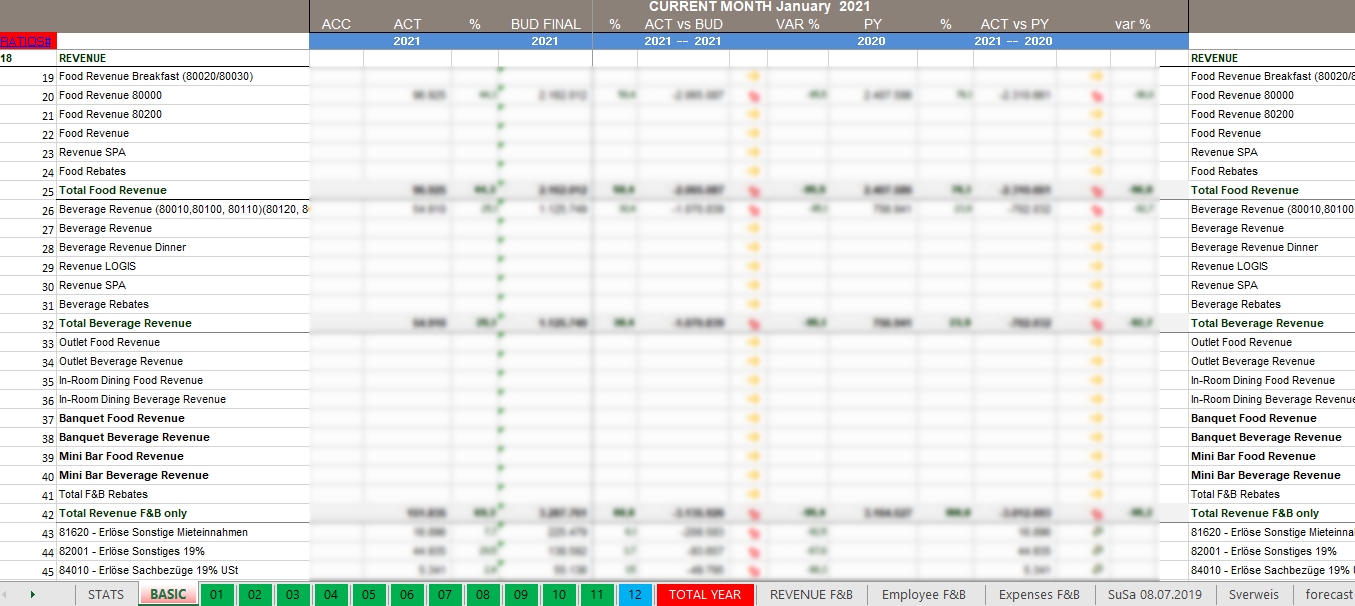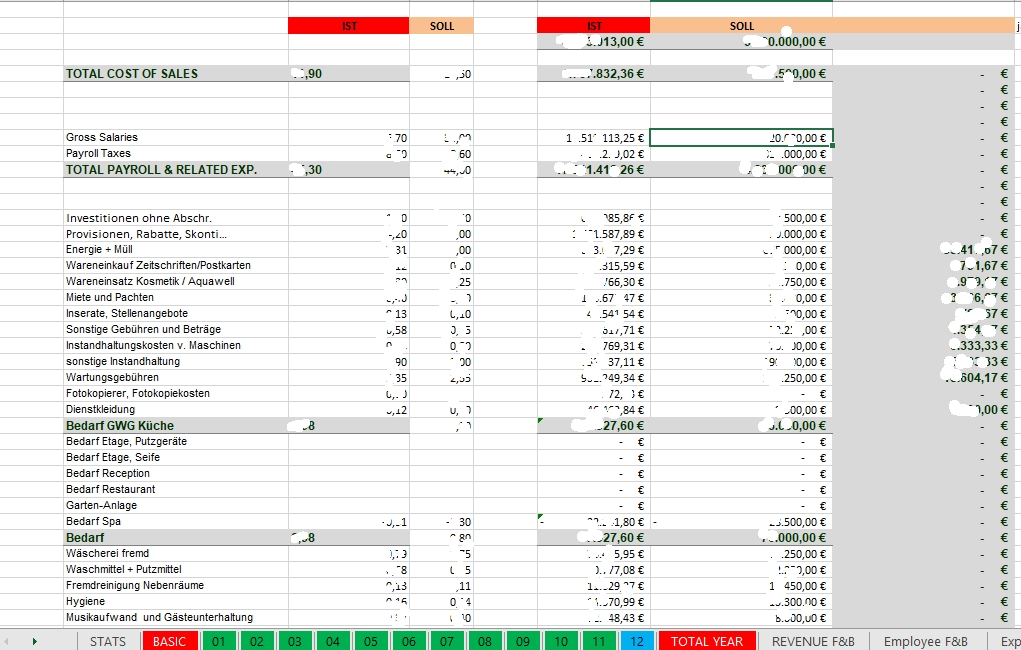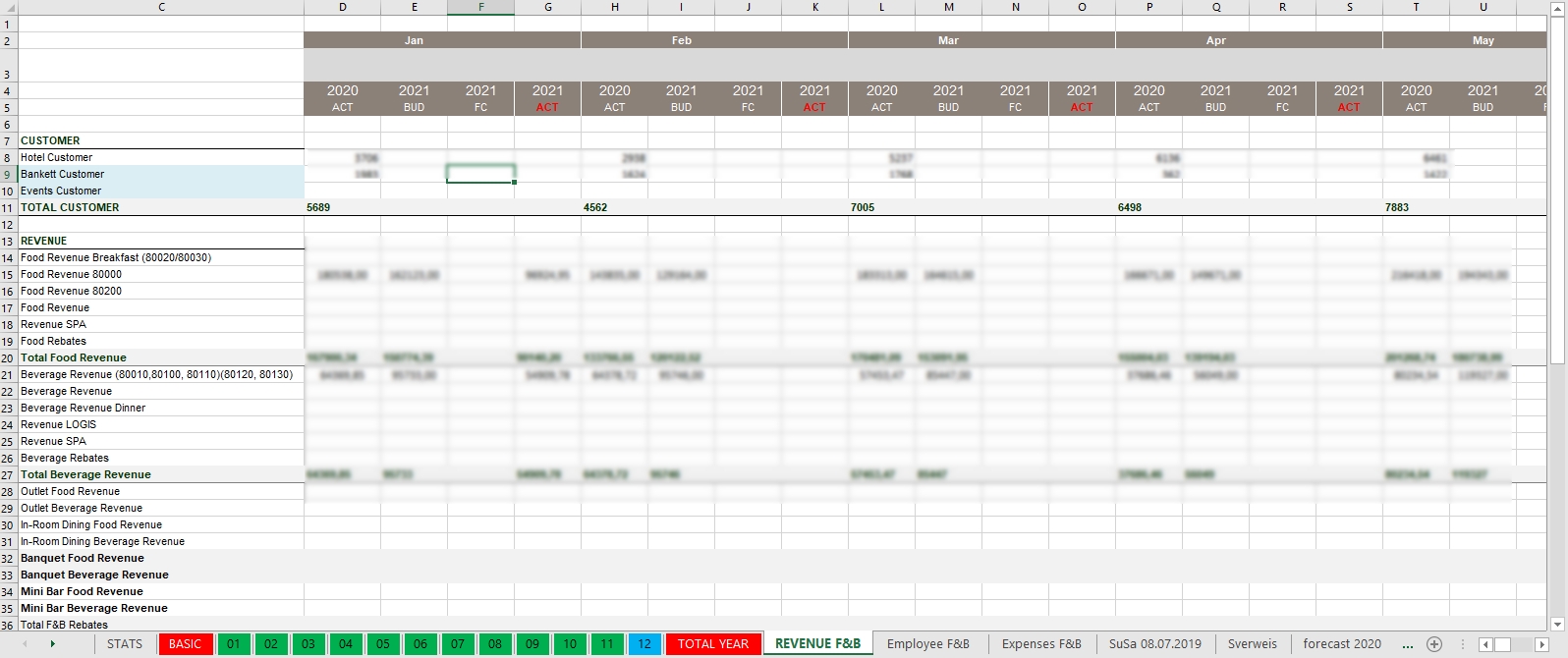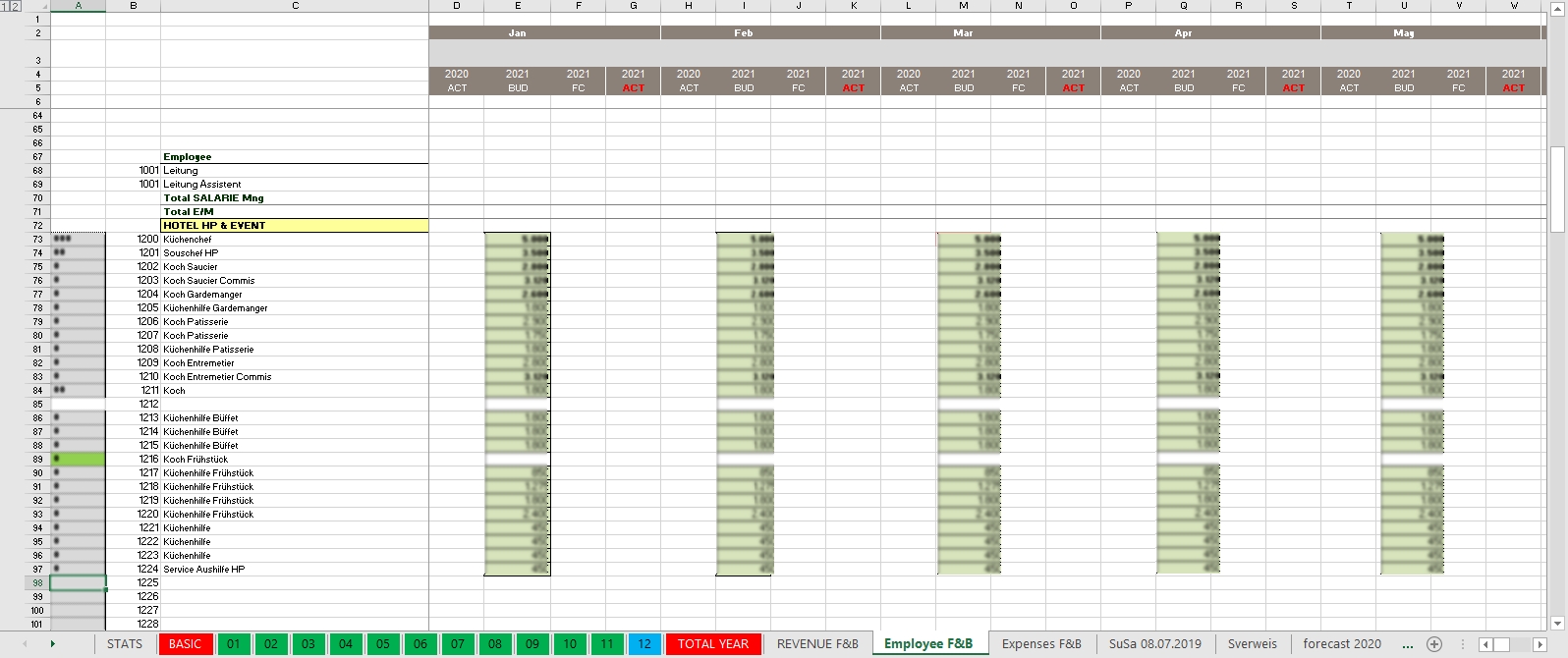Annual budget, monthly budget, forecast
Budget and Forecast
plan to represent the monthly reporting
plastically.
Budget : an estimate of costs,
revenues, and resources over a specified period,
reflecting a reading of future financial
conditions and goals. One of the most important
administrative tools, a budget serves also as a
(1) plan of action for achieving quantified
objectives,
(2) standard for measuring
performance, and
(3) device for coping with
foreseeable adverse situations.
What makes a Budget effective ? The process of converting plans into budget. Budget can be expressed in terms of CASH budget, SALES budget, LABOUR cost budget , the BUDGETED profit and loss account. A surplus budget means profits are anticipated, while a balanced budget means that revenues are expected to equal expenses. A deficit budget means expenses will exceed revenues. Budgets are usually compiled and re-evaluated on a periodic basis. Adjustments are made to budgets based on the goals of the budgeting organization.
When it comes to achieving financial goals, organization is key. And a blank budget
worksheet printable is a great way to start that
organization. You cant create a budget,
track your spending, or crush your debt if you don’t have the numbers. A budgeting worksheets
will help you know those numbers.
To make the most of the budgeting, you first need to gather the following things:
Income from all sources
Expenses (bank statements are great sources!)
Calculator
Writing utensil.
The budget is indeed your
first forecast. But how to do make an accurate forecast for a hotel?
To do, it`s need to clarify the following elements; unconstrained demand, stay patterns, booking pace.
The Budget should be realistic, but it is also the time to set new targets.
Think about sales resources or online marketing, what if you increase your marketing expenses?
The budget should be developed day by day, to answer the following question: At which rate and how many
rooms can you sell for every future day (booking pace)?
The budget can therefore be developed by market segments in room nights and revenue. The budget can also
be widened with a monthly forecasting per country of origin and top accounts (corporate, tour operators).
How do you anticipate the business demand, the leisure demand per country? At which rate can you sell on
the upcoming months? How will your main corporate accounts behave?
The forecast will reflect the expected situation in the short term (1 to 3 months). Forecasts will be compared to the budget. New rate and selling strategies will be applied depending on the new Revenue expectations to maximize Revenue. Besides of the frequency of the budget review you can implement a Rolling Budget. That means keeping open constantly 12 or 13 month strategy.

This will help to be more accurate as the data will use to budget or forecast for the same month next year. Identified the level of unconstrained demand. The unconstrained demand is your total demand for a particular date irrespective of your capacity. The unconstrained demand will help to calculate the Last Room Value for certain dates, and possible length of stay restrictions that may apply. Once peak periods are detected, its shows low paying business. Historical data capture will help to calculate potential unconstrained demand. It is possible to develop manual tools which would help to identify those periods, such as with a spreadsheet software. The unconstrained demand shall help you to evaluate the Last Room Value and displaced revenue. Record your denials for individuals but also for group bookings: by length of stay, by market segments, with total value for groups. What is your group unconstrained demand?
Developing denial and regrets reasons:
It will
help to record on a demand calendar when the
main competitors are fully booked or sell high
rates as this affects the demand to your hotel.
Phase 3 of the revenue management implementation
plan consist of the following steps:
1. Develop
and update the demand calendar for any
recognized exceptions.
2. Implement day by day
budget, by segment with room nights and average
selling rate.
3. Preparing an action rolling
forecast to keep 12 or 13 months day by day rate
strategies open on all public distribution
channels.




